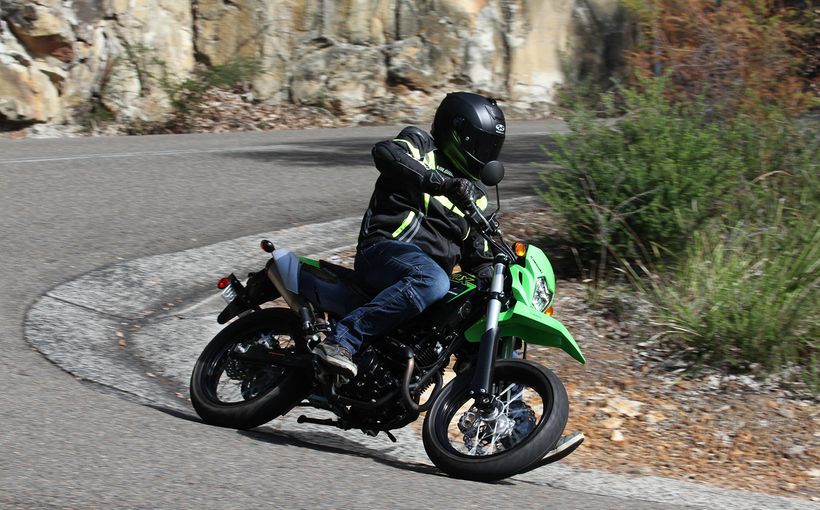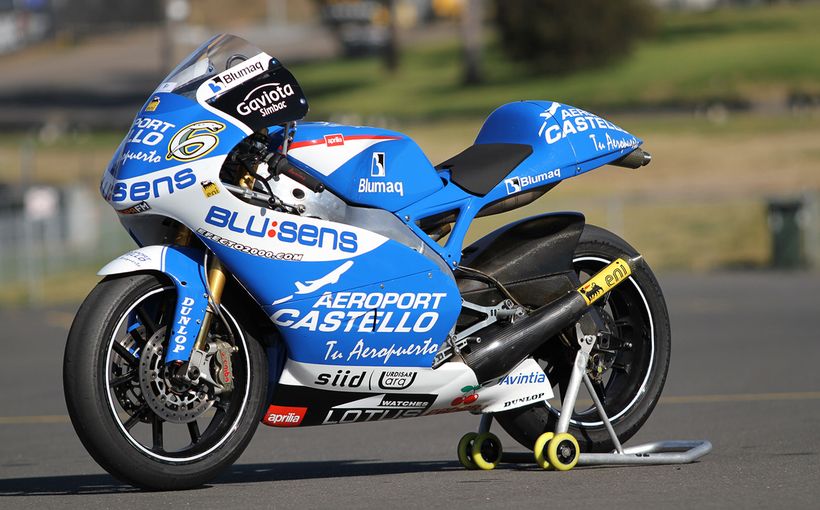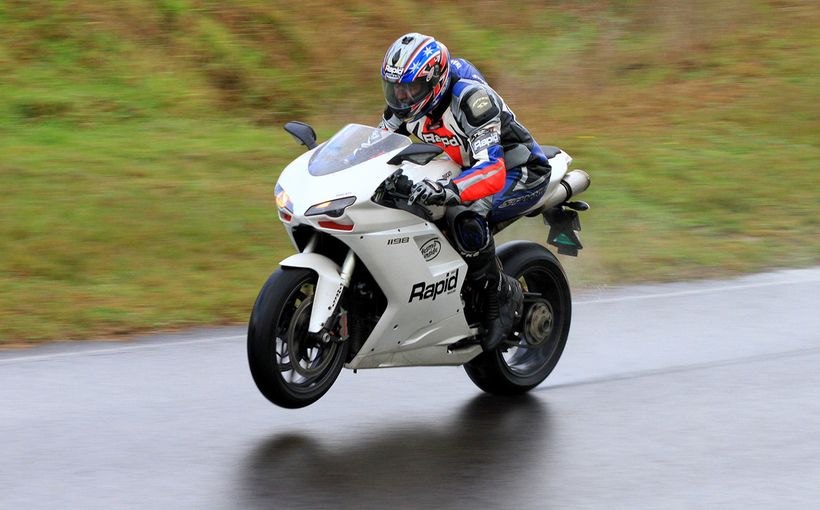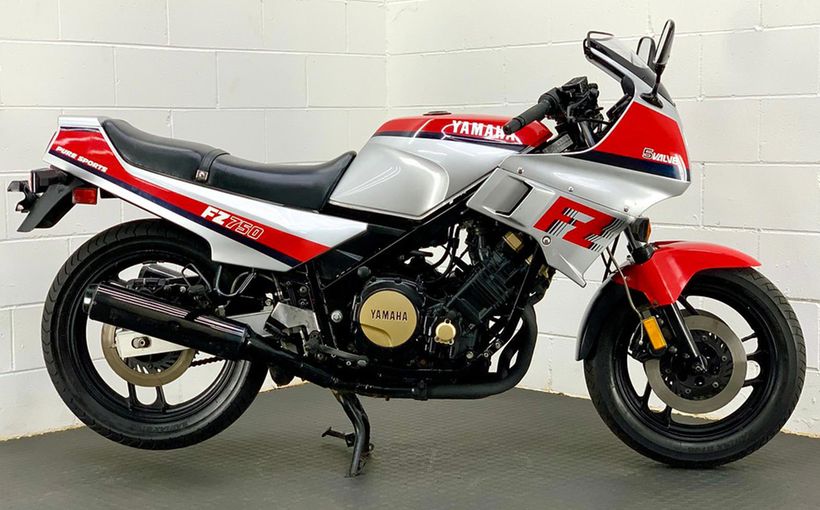
Words by Jeff Ware Photography by Alexandra Cooper & Heather Ware
In the 1990s Kwaka 750s were renowned for the confidence-inspiring front-ends and the brilliant steering of their superbikes. It’s no co-incidence that there were thousands of ZXRs and ZX-7Rs out on twisties every Sunday back then. Anyone could ride one and feel good.

The plot was lost somewhat with the early ZX-10Rs but in 2011 it seemed the big K finally arrived back in that oh so sweet spot that puts a smile on every scratcher’s dial…
Back then they were a whopping $19,990 + ORC, a decade ago, but for anyone looking for a bargain superbike that will still prove to be fantastic on the road and track even in 2021, this model should not be overlooked. One could be yours for $9 - $12k for a mint condition example.
As it is the tenth birthday of the mighty Gen4, let’s go back and revisit our full test. We were blown away!

ON TRACK
As soon as I peel into the esses for the first time and flick right, right, left, right, left, right, left, right through this torture test I am incredibly impressed. This is good. Very good.

Continuing on my lap, with the circuit to myself, I begin to push harder than normally possible on road tyres. I can feel the S-KTRC traction control system working already as I accelerate hard off corners. The rear of the bike slips out an inch or two each time I open the throttle at full lean off corners and then it doesn’t go any further. There’s no intrusive feel at all, it just stops sliding or spinning. It’s amazing. It’s like the bike is riding itself for a moment. I guess it is… That’s on level one of three available levels, the least intrusive. Flicking through the range and sampling each level is as easy as using the button on the left bar when the throttle is closed. I stuck to level one on the track after sampling two and three.

With good sticky supersport hoops fitting I doubt I would feel the system at all. It really makes a difference to confidence having it there and there is one particular right hand first gear corner where there’s a real jump forward as the throttle is cracked and on all other bikes I normally dampen the throttle action with rear brake. On the 10R I just allow the back to ‘let go’ and the S-KTRC takes care of the rest.
I continue lapping and this is a tiring track. I don’t want to stop and I’m not tiring. The ZX-10R is silky smooth throughout the rev range. It is fast but there are no surprises.

As we gel together lap after lap I feel as if the bike is truly an extension of me. I’m not an extension of it. And I put that down to the fabulous chassis geometry that is making me feel like I can place the front wheel exactly where I want it to be from any lean angle, brakes on, brakes off, over bumps, on the gas, off the gas, it’s all good and the bike remains composed with no scary stand up effect on the brakes.

It carries rolling speed like a supersport machine and falls on its side absolutely effortlessly. Like a Fireblade, there is no need to plan the next corner in order to make it through in one piece. The bike will follow me through the turn. It just happens like a natural movement. An extension. The ZX-10R is almost telepathic. It feels very safe and very planted. Geometry is an incredible thing…

As I gain momentum and begin to overheat the tyres on this 35ºC day I find myself in a position where I can test the ABS. To my surprise as much punishment as I dish out braking into turns on the BT016, I can’t feel the ABS doing anything and I have no time to look at the light on the dash. This is incredible. Completely non-intrusive but a sensationally powerful and progressive braking system. The rear brake is fantastic. Strong and effective with no lock-up. Later, I test the ABS on the street…
Like the S 1000 RR, the ZX-10R is peaky without strong mid-range throttle response compared to old school engines like the GSX-R1000 or Fireblade. I am working the engine hard in the 7000 to 10,000rpm range to make fast forward progress. Short-shifting and carrying rolling speed has the 10R struggling to pull out of turns and up some of the steep hills at The Farm. It needs, and loves, to be revved.


Once that momentum is there and I’m in the groove with my gear changes the bike becomes a missile. Fast. Damn fast and very close to S 1000 RR. Probably faster than the CBR1000RR, GSX-R1000, YZF-R1, KTM RC8R, 1198S or MV Agusta F4. And a fair whack quicker than the previous model. But something tells me the German might have the legs…
The performance of the Big Piston Forks is stunning. They are plush enough to soak all bumps and prevent any skittery behaviour at full lean or off turns yet as I brake hard for the many hairpins they cope completely. The bike remains stable and composed even under extremely abrupt, forceful braking.

The unconventional horizontal back-link rear shock was also fine on stock settings, the incredible chassis making easy work of tightening corner exit if the bike did squat and run wide off some hard acceleration exits. But it is so minimal that I don’t bother changing a thing. Another first.
Despite the Ohlins steering damper cranked up, I get the odd wiggle of the bars over hard accelerating crests, a small trade-off for sensational geometry.
It’s an enormous compliment to Kawasaki to compare the chassis of the 2011 Ninja to that of the now middle-aged CBR1000RR. Why? Because the Honda’s strong point is that it is incredibly easy to ride for all types of riders.

This year, though, Honda should be worried (and they were – Ed). BMW have the S 1000 RR, which also sports a very sweet chassis and now, the ZX-10R. What these bikes have over the other inline fours are sensational electronics to compliment the chassis and high power figures. And electronic rider aids SHOULD be expected these days. They are as much ‘the norm’ as upside-down forks, radial-mount calipers or wave rotors. A bike without them is getting out of date quickly…

And what’s the ZX-10R like in the real world? In my opinion, even better than it is on the track. I spent a day on my own shooting around the countryside and a day with mates up my local twisties. And one of them happened to be Scotty, who owns our 2008 Project ZX-10R now. Scott was kind enough to let me test the bikes back-to-back a few times on the day and it really highlighted the brilliant step forward Kawasaki made.

WHAT WAS NEW?
While the capacity’s the same as before, the inlet valves are bigger, the valve timing is wilder and there’s 0.6mm more valve lift. The airbox is bigger and with a smoother shape to aid the additional air flow too. The cylinders are now offset relative to the crankshaft. They’re shifted by 2mm from the crank’s centre line so that on the power stroke the conrods are at less of an angle to the pistons, which in turn means reduced side thrust during this high pressure phase and less friction. The pistons experience less force and can be made lighter.

The crankshaft has been raised in the bike and because it’s higher the gearbox shafts have been flipped – on the 2011 bike the input is above the output where they were the other way around before, in order to keep the final drive sprocket in the right position relative to the swingarm pivot. To compensate for this the fuel tank drops deeper down behind the airbox, so the fuel is carried lower and the overall centre of gravity is 4mm lower than before. It’s also nearer to the C of G, helping agility even further.
The exhaust system uses titanium header pipes which have a very large bore size, so much so that Kawasaki claims the length and diameter are almost the same as the race version’s. Fitting a full aftermarket system then will gain you little more than simply losing the cat converter pre-chamber and fitting an end can.
The chassis has turned more conventional than Kawasaki’s favoured semi-monocoques, featuring twin aluminium spars that run as straight as possible between headstock and swingarm pivot. All the sections are cast and there are only seven components welded together, so it’s a simple yet effective design which is responsible for the biggest weight saving over the old bike – the new one is 10kg lighter overall!

The geometry is more radical with a half a degree steeper fork angle at 25º and less trail at 107mm, but stability is maintained by the use of Showa Big Piston Forks, first seen on the 2009 Z-6R, which offer finer and more consistent control. Instead of a damping cartridge like conventional upside down forks, effectively the whole fork inner is the cartridge, or damping unit, which means a bigger damping piston, reducing damping fluid speeds and increasing linearity and control, especially at lower suspension speeds such as during initial braking.
Kawasaki’s finally moved on from the old Uni-Trak rear suspension design, replacing it on the ZX-10R with what it calls ‘horizontal back link’, which means the shock is laid almost horizontal above the swingarm.


Protect your motorbike. Call Shannons Insurance on 13 46 46 to get a quote today.









